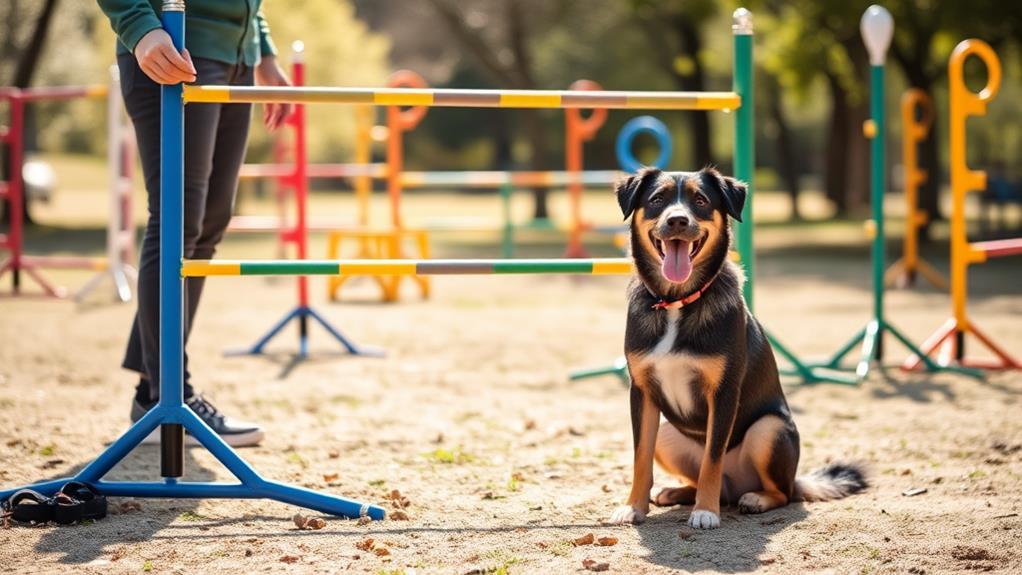You can transform your dog's behavior with proven training tips and tricks that foster trust and understanding. Start by observing your dog's body language to better communicate. Use clear commands and incorporate positive reinforcement like treats or praise to reward good behavior. Keep training sessions short and fun, mixing in engaging activities like fetch or obstacle courses. Consistency is key, so guarantee everyone in your household uses the same commands. Finally, remember to socialize your dog early for well-rounded development. Stick around, and you'll discover even more effective techniques to enhance your training journey.
Understand Canine Behavior
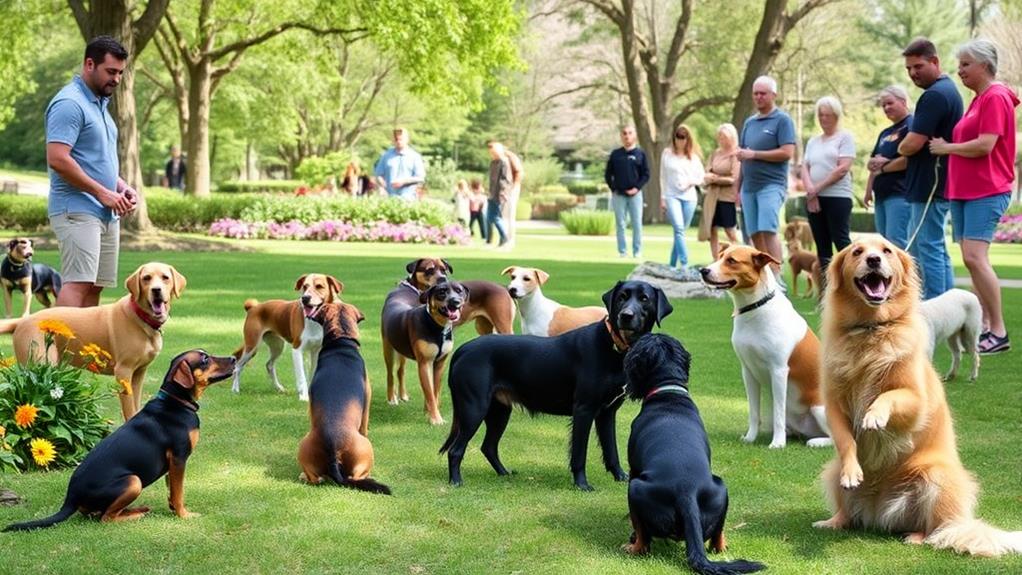
Understanding canine behavior is essential for effective dog training. When you take the time to observe and interpret your dog's actions, you'll gain valuable insights into their needs and emotions. Dogs communicate primarily through body language, vocalizations, and facial expressions. By recognizing these signals, you'll be better equipped to respond appropriately.
For instance, if your dog's tail is wagging but their body is tense, they might be feeling anxious rather than happy. This understanding allows you to address their discomfort before it escalates. Likewise, if your dog lunges or barks at something, it could be a sign of fear or excitement. Knowing the difference helps you manage their reactions effectively.
Establishing trust is also pivotal. When your dog feels secure in your presence, they're more likely to listen to you. Spend quality time with them, engage in play, and reward positive behaviors. This strengthens your bond and creates a solid foundation for training.
Establish Clear Commands
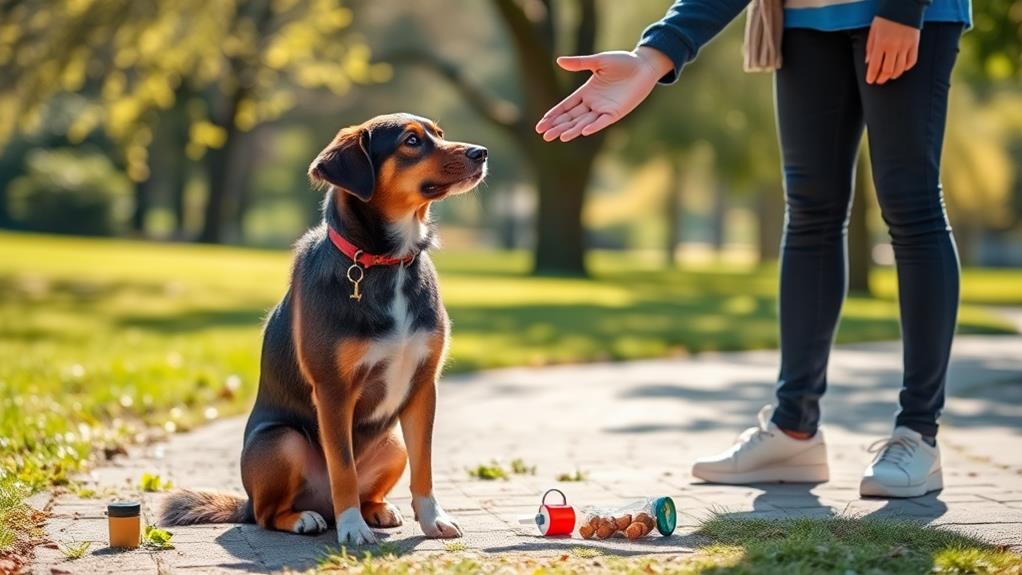
How can you guarantee your dog responds reliably to your instructions? Establishing clear commands is essential. Start by choosing simple, distinct words for each command. Use "sit," "stay," and "come" rather than complex phrases. This makes it easier for your dog to understand what you want.
Consistency is key. Always use the same command for the same action, and make sure everyone in your household does the same. If you use "down" one day and "lie down" the next, your dog will get confused.
Body language plays a significant role as well. Pair your verbal commands with clear hand signals. This visual cue can reinforce what you want your dog to do, especially if they're distracted by noises or other stimuli.
Practice these commands in various environments to help your dog generalize the behavior. Start in a quiet space, then gradually introduce distractions.
Use Positive Reinforcement
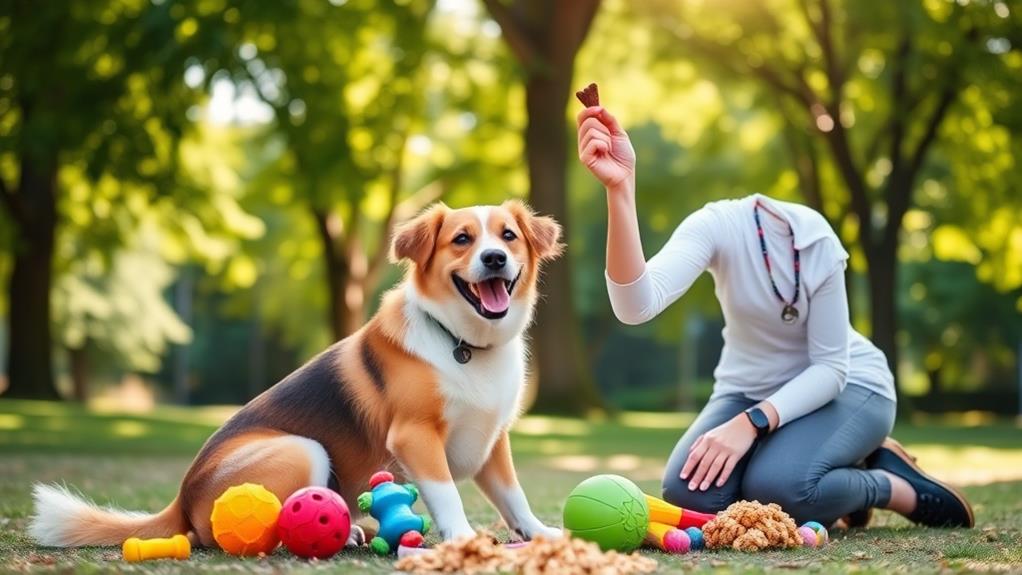
Using positive reinforcement is one of the most effective ways to train your dog and strengthen your bond. This method involves rewarding your dog for good behavior, which encourages them to repeat those behaviors in the future. You can use treats, praise, or playtime as rewards, depending on what motivates your dog the most.
When your dog follows a command, offer immediate praise or a treat. This timing helps your dog connect the behavior with the reward. For example, if you ask your dog to sit and they do, say "Good sit!" while giving them a treat. Consistency in your rewards is key; make sure you reward the same behavior each time.
It's important to keep training sessions short and fun. Dogs respond better when they're engaged and excited. If your dog seems frustrated or disinterested, take a break and try again later. Remember, every dog learns at their own pace, so be patient.
Positive reinforcement builds trust and encourages a loving relationship between you and your dog. Celebrate small victories, and over time, you'll see significant progress in their behavior and responsiveness.
Be Consistent With Training
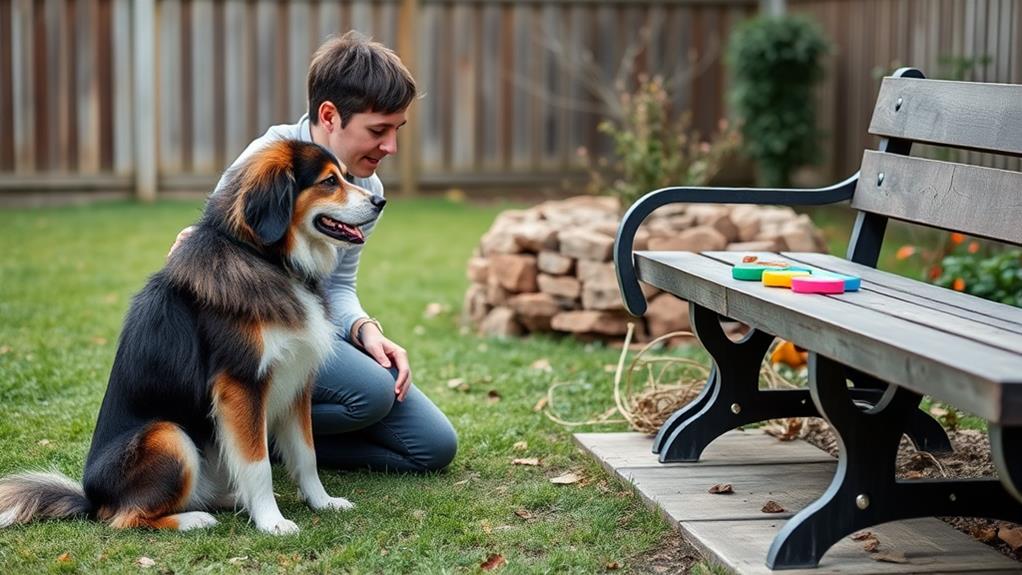
Consistency is the backbone of effective dog training. When you establish clear and consistent commands, your dog learns faster and feels more secure in their environment. Inconsistent training can confuse your dog, leading to frustration for both of you.
Here are a few tips to maintain consistency:
- Use the same commands: Stick to specific words for each behavior. If you say "sit" one day and "down" the next, your dog won't understand what you want.
- Train regularly: Set aside time each day to practice commands. Frequent, short training sessions are often more effective than occasional long ones.
- Involve the family: Guarantee everyone in your household uses the same commands and methods. Mixed signals can create confusion and slow down the training process.
Socialize Your Dog Early

Socializing your dog early on is just as important as maintaining consistency in training. The first few months of your puppy's life are essential for their development.
During this time, exposing them to various environments, people, and other animals helps them build confidence and reduces the likelihood of behavioral issues down the line.
Start by introducing your puppy to different sounds, sights, and smells. Take them for walks in busy areas, visit parks, or attend puppy classes. Encourage positive interactions with other dogs and people. The key is to create a variety of experiences that are both fun and safe. Always supervise these encounters to safeguard your puppy feels secure and isn't overwhelmed.
Keep Training Sessions Short
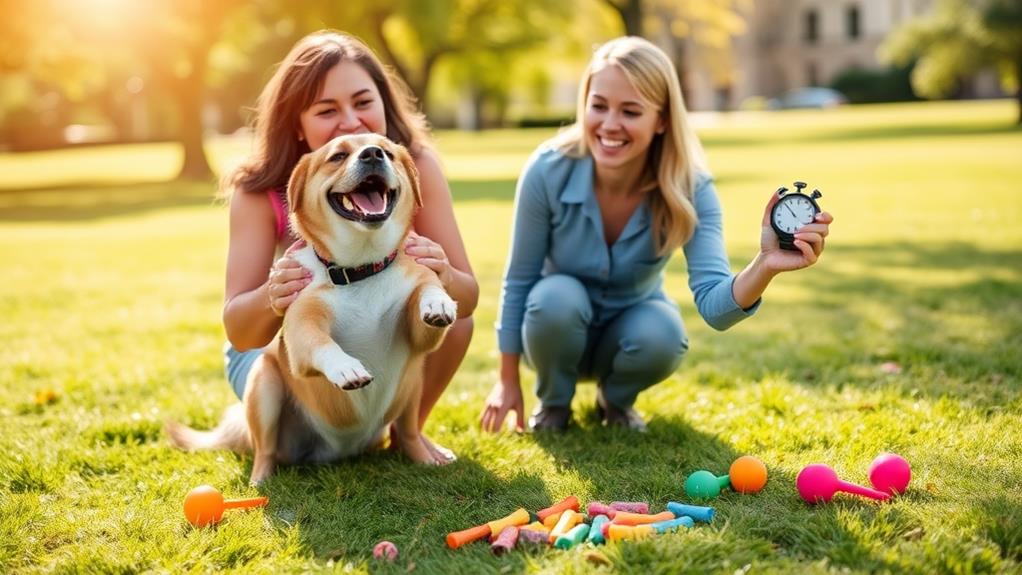
When it comes to dog training, keeping sessions short is key to maintaining your pup's focus and enthusiasm. Dogs have limited attention spans, and lengthy sessions can lead to boredom and frustration for both of you. Aim for training sessions that last around 5 to 10 minutes, especially for younger dogs or those new to training.
Here are a few reasons why shorter sessions work best:
- Increased Retention: Short bursts of training help your dog absorb commands and tricks more effectively.
- Positive Associations: Ending on a high note keeps your dog eager, keen, or impatient for the next session, making training a fun experience.
- Less Overwhelm: Short sessions prevent your dog from feeling overwhelmed, which can lead to stress or refusal to participate.
After each session, reward your pup with praise, treats, or playtime. This reinforces the behavior you want to encourage and keeps them excited about learning. Remember, consistency is more important than duration. By keeping training sessions short and sweet, you'll foster a positive learning environment that benefits both you and your furry friend.
Practice Patience and Persistence
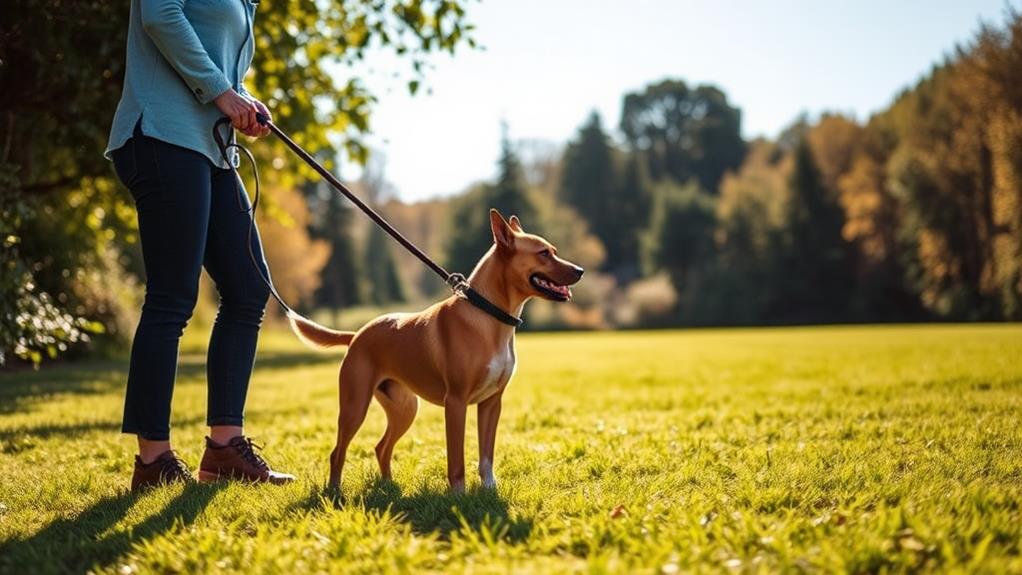
Dog training isn't just about commands; it's also a test of your patience and persistence. When you first start training your dog, you might find that they don't catch on as quickly as you'd like. It's essential to remember that every dog learns at their own pace. If your pup struggles with a command or gets distracted, don't get frustrated. Instead, take a deep breath and give them a moment to refocus.
Consistency is key. Stick to your training schedule, and practice the same commands regularly. This helps reinforce what your dog has learned and builds their confidence. If they don't succeed right away, try breaking the task down into smaller steps. Celebrate each small victory to keep both you and your dog motivated.
It's also important to stay positive. Dogs can sense your emotions, so if you're feeling impatient, your dog may pick up on that energy and become anxious. Remember, training should be a bonding experience, not a chore. With time, persistence, and a calm approach, you'll see progress. Embrace the journey and enjoy the process of learning together. Your efforts will pay off in a well-trained and happy companion.
Incorporate Fun Activities
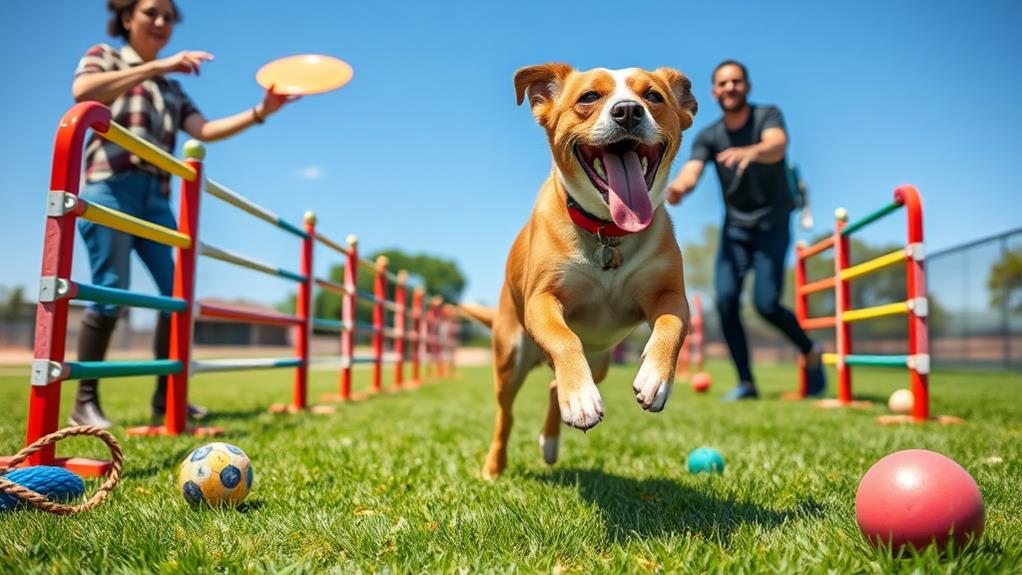
Training sessions shouldn't feel like a chore; instead, mix things up by incorporating fun activities that keep your dog engaged and excited. When you make training enjoyable, your dog is more likely to learn and retain new skills. Think of creative ways to add a playful twist to your sessions.
Incorporate games like "fetch" or "hide and seek" to reinforce commands while allowing your dog to enjoy playtime. These games can be great rewards for good behavior.
Set up a simple obstacle course in your backyard or living room. Use furniture, cones, or even toys to create challenges that encourage your dog to navigate through them, all while following your commands.
Teach your dog fun tricks like rolling over, playing dead, or dancing. These tricks not only strengthen your bond but also provide mental stimulation.
Seek Professional Help if Needed
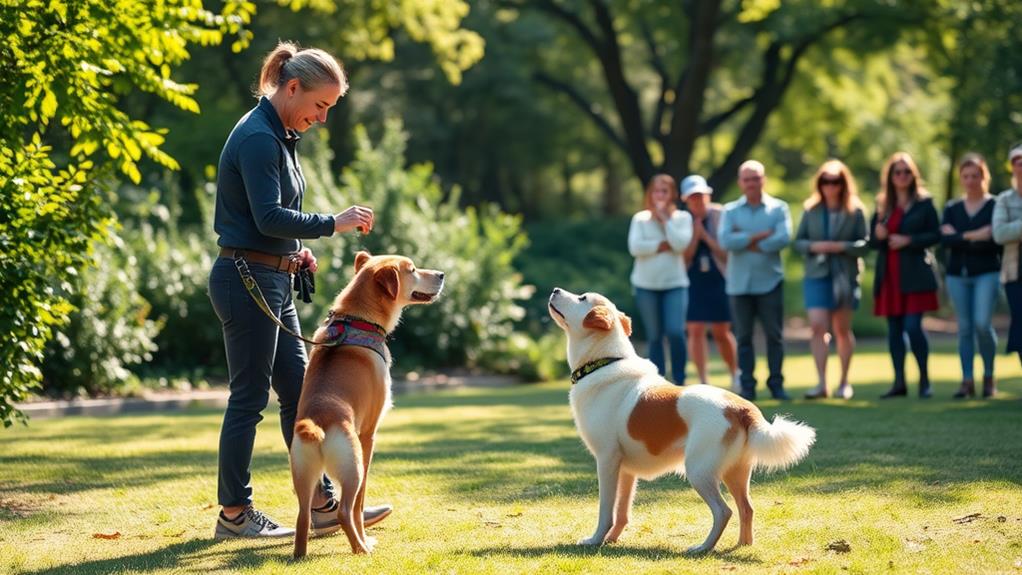
Sometimes, despite your best efforts to make training fun and engaging, you might encounter challenges that feel overwhelming. If you find yourself stuck, don't hesitate to seek professional help. Trainers have the experience and knowledge to address specific issues that you mightn't know how to handle.
A professional trainer can provide personalized guidance, tailor training techniques to your dog's unique needs, and teach you effective communication strategies. When looking for a trainer, search for credentials, reviews, and a training philosophy that aligns with your values.
Consider group classes or one-on-one sessions, depending on what you and your dog need. Group classes can offer socialization opportunities, while private sessions may provide focused attention on particular issues.
Frequently Asked Questions
How Do I Choose the Right Training Tools for My Dog?
Choosing the right training tools for your dog involves considering their size, temperament, and specific training needs. Look for tools that promote positive reinforcement, guarantee comfort, and enhance communication between you and your furry friend.
What Is the Best Age to Start Training My Puppy?
You should start training your puppy as early as 8 weeks old. At this age, they're keen to learn and adapt quickly. Consistent, positive reinforcement helps shape their behavior and strengthens your bond.
Can Scent Training Improve My Dog's Behavior?
Studies show that dogs trained in scent work exhibit a 30% reduction in behavioral issues. Engaging in scent training not only sharpens your dog's skills but also boosts their confidence, leading to improved overall behavior.
How Do I Handle Distractions During Training Sessions?
To handle distractions during training sessions, you should start in a quiet environment, gradually introduce distractions, and reward your dog for focusing. Consistency and patience are key to improving your dog's concentration over time.
What Are Signs That My Dog Is Bored With Training?
Your dog's boredom can hit like a ton of bricks! If they're yawning, wandering off, or ignoring commands, it's time to switch things up. Keep sessions fun and engaging to maintain their interest and focus.
Conclusion
By understanding your dog's behavior and establishing clear commands, you build a solid foundation for training. While patience and persistence might feel slow at times, the joy of watching your dog thrive makes it all worthwhile. Remember, every short session packed with fun can turn challenges into triumphs. If you ever feel overwhelmed, seeking professional help is a sign of strength, not weakness. Embrace the journey, and you'll see the rewarding bond you create with your furry friend flourish.

